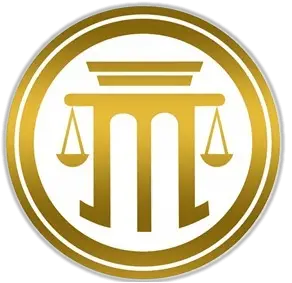Introduction
If you are not a fan of buying brand new goods because they are, upfront, expensive, and you would rather spend money from purchasing second hand items, which you can get for half the price, you have to pause and take time to read this article right at this very moment. This may, otherwise, just save you from possible imprisonment and payment of fine.
Presidential Decree No. 1612, otherwise known as the the Anti-Fencing law of 1979, was created to address the rampant robbery and thievery of government and private properties that have yielded profit for the culprit, at the expense of people who are willing to buy goods for cheap prices.
In the case of Cahulogan vs. People,1 the Supreme Court had provided for the essential elements of the crime of fencing, to wit:
[1] a crime of robbery or theft has been committed;
[2] the accused, who is not a principal or an accomplice in the commission of the crime of robbery or theft, buys, receives, possesses, keeps, acquires, conceals, sells or disposes, or buys and sells, or in any manner deals in any article, item, object or anything of value, which has been derived from the proceeds of the crime of robbery or theft;
[3] the accused knew or should have known that the said article, item, object or anything of value has been derived from the proceeds of the crime of robbery or theft; and
[4] there is, on the part of one accused, intent to gain for oneself or for another.
As provided in this case, Fencing is a malum prohibitum offense because it presumes that mere possession of any good, article, item, object or anything of value which has been the subject of robbery or theft,2 already constitutes the crime of fencing.
What is the crime of fencing?
Section 2 (a) of Presidential Decree [PD] No. 1612 provides that:
“Fencing” is the act of any person who, with intent to gain for himself or for another, shall buy, receive, possess, keep, acquire, conceal, sell or dispose of, or shall buy and sell, or in any other manner deal in any article, item, object or anything of value which he knows, or should be known to him, to have been derived from the proceeds of the crime of robbery or theft.”3
Can you be held liable as an accessory to the crime of theft or robbery instead of violation of Anti-Fencing Law?
Before the enactment of P.D. No. 1612, a person who committed the act of fencing could be prosecuted as an accessory to the crime of theft and robbery. Upon conviction, he is punished with a penalty two degrees lower than the principal.4
With the advent of PD No. 1612, such person can be prosecuted as an accessory under the Revised Penal Code (RPC) or as a principal under PD No. 1612.
The State now has a choice to either prosecute a person under RPC or under PD 1612. However, the preference for the latter would seem inevitable considering that fencing is a malum prohibitum crime, and P.D. No. 1612 creates a presumption of fencing and prescribes a higher penalty based on the value of the property.5
Who is liable for anti-fencing law?
A person liable for anti-fencing law is called a “Fence” which includes any person, firm. association, corporation or partnership or other organization who/which commits the act of fencing as defined earlier.6
How does a person violate anti-fencing law?
A person violates anti-fencing law by buying, receiving, possessing, keeping, acquiring, concealing, selling or disposing of, or buying and selling, or in any manner deal in any article, item, object or anything of value which he know, or should be known to him, to have been derived from the proceeds of the crime of robbery or theft.
Are crimes of robbery and theft separate and distinct from fencing?
Crimes of robbery and theft are separate and distinct from fencing, in the following sense:
[1] As to the classification of liability, the crimes of theft and robbery, the perpetrator is only an accessory to the crime while on fencing, the perpetrator is a principal.
[2] As to defense of good faith, in the crimes of theft and robbery, it is applicable while on fencing it is not since intent is not an element to establish its commission.
Explain the element of knowledge of a particular fact?
One is deemed to know a particular fact if he has the cognizance, consciousness or awareness thereof, or is aware of the existence of something, or has the acquaintance with facts, or if he has something within the mind’s grasp with certitude and clarity.
When knowledge of the existence of a particular fact is an element of an offense, such knowledge is established if a person is aware of a high probability of its existence unless he actually believes that it does not exist.7
What do the words “should know” denote?
In the case of Dizon-Pamintuan vs. People,8 the Supreme Court said that:
“the words “should know” denote the fact that a person of reasonable prudence and intelligence would ascertain the fact in performance of his duty to another or would govern his conduct upon assumption that such fact exists.8
“Knowledge refers to a mental state of awareness about a fact. Since the court cannot penetrate the mind of an accused and state with certainty what is contained therein, it must determine such knowledge with care from the overt acts of that person.8
“And given two equally plausible states of cognition or mental awareness, the court should choose the one which sustains the constitutional presumption of innocence.”8
Because of this phrase, there is a presumption that a fence has knowledge that the item, good, or article found in his or her possession are proceeds of the crime of robbery or theft.
Is the stolen property indispensable to prove fencing?
The crime of fencing can be prosecuted even without the stolen property. The stolen property is merely corroborative of the testimonies and other evidence adduced by the prosecution to prove the crime of fencing.9
Should intent to gain be proved?
In Anti-Fencing Law, being a special law and a malum prohibitum, intent to gain need not be proved because good faith is not a defense.
The prima facie evidence of guilt is not the intent but the mere possession of an article, good, or item which are proceeds of robbery or theft.
As such, the burden of proof is shifted to the person accused that his or her possession of such an item, good, or article is innocent and without any unlawful intention.
The act of fencing would not have been a crime had it not been codified into law.
What is the presumption of fencing?
If the owner of the property files a complaint for robbery or theft and you are found to be in possession of such property, the authorities can apprehend you because “mere possession of any good, article, item, object, or anything of value which has been the subject of robbery or thievery shall be prima facie evidence of fencing.”10
If the fence is a juridical person, who will be liable?
The penalty imposed for violation of Anti-Fencing Law is imprisonment and fine. As a result, only a natural person can be made liable, which follows that “If the fence is a partnership, firm, corporation or association, the president or the manager or any officer thereof who knows or should have known the commission of the offense shall be liable.”11
Explain the necessity of securing a clearance or permit when selling second hand items
Taking into consideration the presumption laid down by Section 5 of PD 1612, in order to counter such presumption, Section 6 of PD No. 1612 provides that:
“all stores, establishments or entities dealing in the buy and sell of any good, article item, object of anything of value obtained from an unlicensed dealer or supplier thereof, shall before offering the same for sale to the public, secure the necessary clearance or permit from the station commander of the Integrated National Police in the town or city where such store, establishment or entity is located.12
“The Chief of Constabulary/Director General, Integrated National Police shall promulgate such rules and regulations to carry out the provisions of this section. Any person who fails to secure the clearance or permit required by this section or who violates any of the provisions of the rules and regulations promulgated thereunder shall upon conviction be punished as a fence.”13
It bears stressing, however, that a clearance or permit is only necessary when the accused is engaged in the buying and selling second hand article. Otherwise, this is not necessary, rather a certificate of ownership would suffice.14
What does the term “second hand article” refer to?
When someone says, second-hand, we usually think it as something that was owned by someone else before or it can also be “hand-me-downs”.
Nevertheless, under the rules and regulations to carry out the provision of Section 6 of PD 1612, “second hand article” refers to any goods, article, item, object or anything of value obtained from an unlicensed dealer or supplier, regardless of whether the same has actually or in fact been used.
Closing Perspective
This law creates anxiety in such a way that you cannot instantly, right then and there, know whether an item, article or good is stolen or not.
This is exactly the purpose of this discussion, which is to raise awareness because in reality, people do not go to authorities to get permits, since, more often than not, they have no idea about this law.
Yet, we have to remember that ignorance of the law excuses no one. You are presumed to know the law. The takeaway from this is that, just because something is of lesser value, it does not mean that you have already saved up money.
You have to take the necessary precautions to avoid any liability. Verify, if you must, because it may cost you a lot, even your liberty, if you do not.
- G.R. No. 225695 March 21, 2018[↩]
- Ibid.[↩]
- PD No. 1612, Section 2 [a][↩]
- Article 57, Act No. 3815, s. 1930[↩]
- Norma Dizon-Pamintuan vs. People of the Philippines, G.R. No. 111426 July 11, 1994[↩]
- Section 2 (b), PD 1612[↩]
- G.R. No. 111426, July 11, 1994, Supra.[↩]
- Ibid.[↩][↩][↩][↩]
- Ernesto Francisco vs. People of the Philippines, G.R. No. 146584. July 12, 2004[↩]
- Section 4, PD No. 1612[↩]
- Section 5, PD No. 1612[↩]
- Section 6 of PD No. 1612[↩]
- Ibid.[↩]
- Mariano Lim vs. People of the Philippines, G.R. No. 211977, October, 12 2016[↩]


